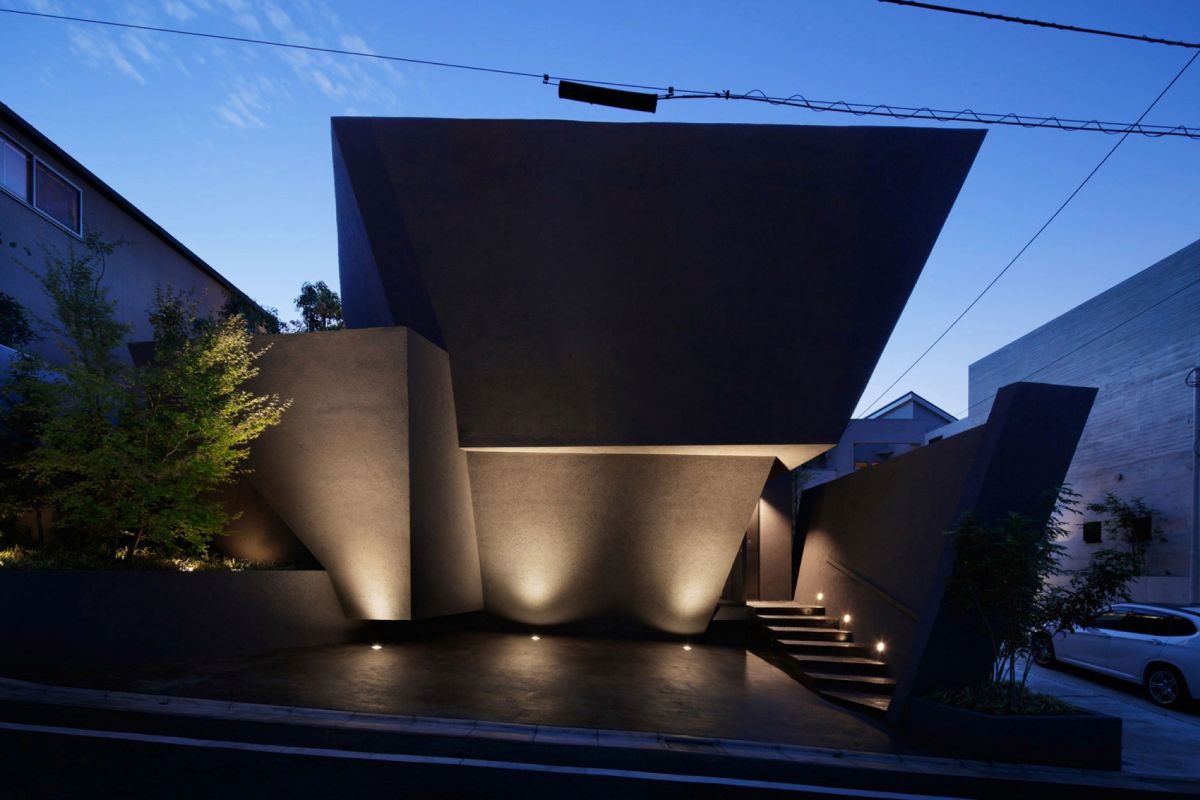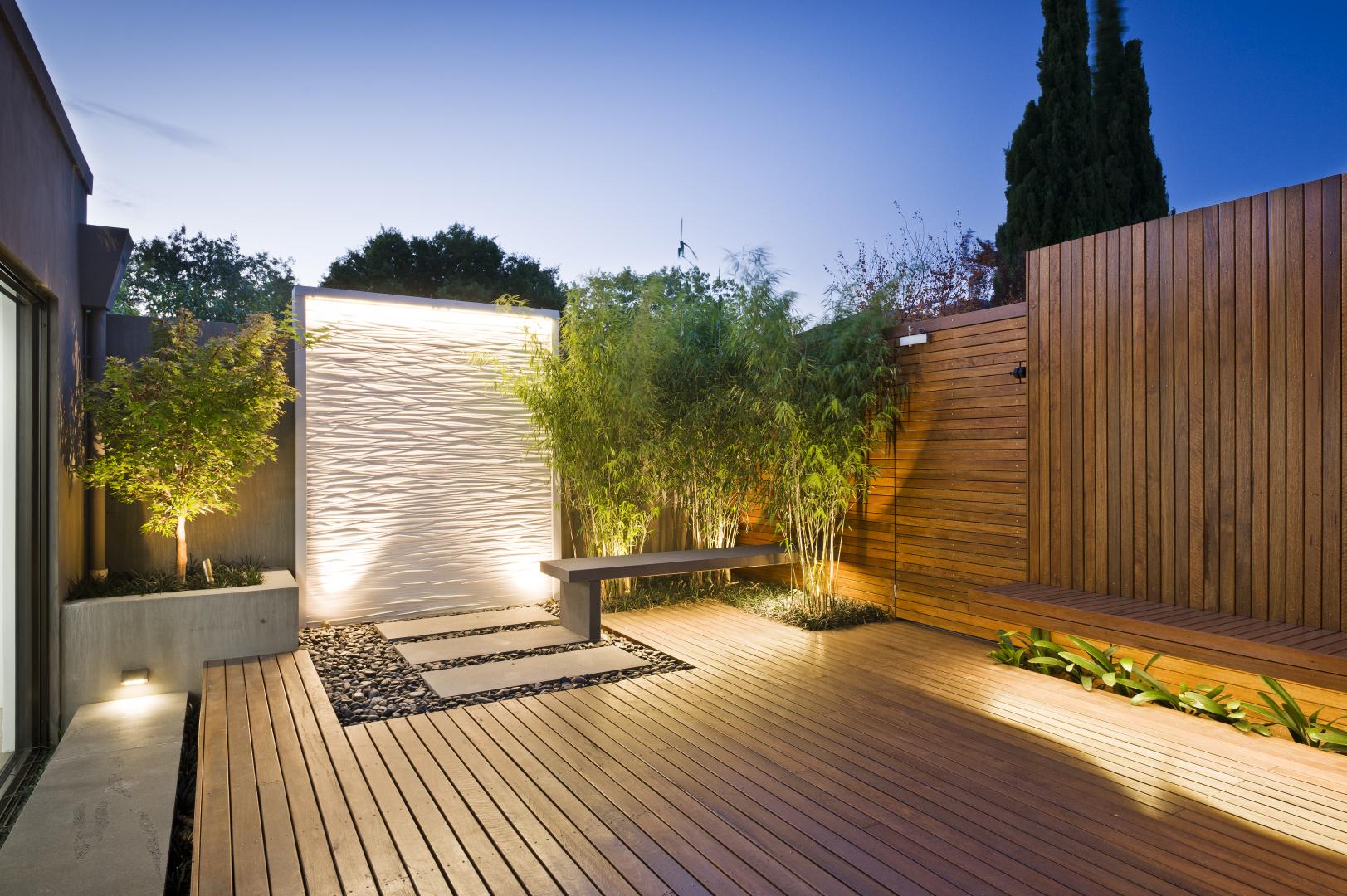An Architect’s Guide To: Outdoor Lighting

Architects: Showcase your work and find the perfect materials for your next project through Architizer. Manufacturers: To connect with the world’s largest architecture firms, sign up now.
Exterior lighting brings façades and outdoor spaces to life. Whether utilizing fixtures for security, landscape or dramatic effect, exterior lights can transform how you see and understand a building or pathway. While exterior lighting may fall under a landscape architect’s purview, it’s important for every type of architect to understand how outdoor lights can integrate with a building and its larger site. By understanding the play between light and dark, architects can use contrast and shadows to create inspiring and intriguing spaces.
The main starting point when considering exterior lighting is establish the primary design goal: are you hoping to identify key features, add drama to surfaces that don’t normally stand out, or to simply create a clear path and entryway? You can both highlight a building’s architectural features and draw attention to plantings and trees. From task lighting for safety to ambient string lights for the perfect outdoor party, start by identifying the outdoor spaces you want to use and then find solutions for each area. Next, you should understand the basic types of fixtures when making your lighting plan. Finally, you should consider security and maintenance. These steps are reviewed in the following guide and provide a solid foundation for understanding different ways to brighten your design.
Research Outdoor Lighting Manufacturers

Audain Art Museum by Patkau Architects
Types of Outdoor Lighting
Task Lighting: It’s important to start with task lighting for illuminating pathways and entrances. Task lighting is paramount when performing specific tasks. This type of outdoor lighting can be achieved by using pathway lights, deck lighting and outdoor step lights. If your fixture is exposed to the elements, you will want to make sure to get a wet-rated fixture. And always make sure that the light fixture is specifically identified as outdoor lighting.
Ambient Lighting: This lighting provides an area with overall outdoor lighting. A common mistake is using too bright a bulb outside. A bulb that uses a lower wattage or has a lower lumens output is generally adequate in the dark. Usually, these are outdoor wall lights or post lights. Ambient lighting is also known as general lighting, which radiates a comfortable level of brightness without glare and allows you to see and walk safely.
Accent Lighting: Accent lighting adds drama to an outdoor space by creating visual interest. Take time to plan and focus your lighting for particular features: walkways, the doorway, landscaping. You can highlight trees, planting areas and architectural details. This type of lighting is usually provided by spotlights. Here, up lighting can be used to create drama with a taller structure or tree.

Modern Zen Design House by RCK Design
Outdoor Lighting Fixtures
Path Lights: This is the most common type of landscape lighting. Path lights are small posts that have a light built in and are capped with a diffuser. They can be used to frame out a space or feature in a yard, or spread out down a walkway. They can be place around a pond, along a driveway or lining a pathway.
Ceiling Lights & Hanging Lights: Ceiling lights and hanging lights are usually selected for damp locations where they’re never directly exposed to rain. Made to be integrated in a surface or as a featured light, they are normally specified as brighter fixtures. You can find hanging lights in a wide range of styles that offer varying levels of brightness.
Wall Lights: The classic front or back porch light, wall lights can be mounted on virtually any vertical surface. One of the most commonly seen outdoor fixtures, wall lights are a durable and attractive. Outdoor wall lights are usually used for decorative purposes, providing ambient or accent lighting rather than focused, bright lighting. These are the ideal choice for patios or porches.

Seoul Metropolitan Government Plaza by C´Topos & Seegan Architects
Post Lights & Pier Mount Lights: As the name suggests, post lights are fixtures that mount on top of posts. When a more architectural light is needed, post mount lights are designed to install onto a post or on top of a structure. They’re commonly used for entries, gates, fences or around a deck. Because they’re usually placed in open-air settings like driveways and pathways, most post lights are “wet rated,” meaning they are designed to withstand direct exposure to rain and moisture. Pier mount lights look much like post lights, but are designed to be installed on top of columns or walls.
Landscape Lights: Landscape lighting is a low voltage system separate from the wall and ceiling lights. Path, spot and floodlights can be used in combination to created layered lighting. Spotlights can be used for featuring a number of outdoor elements like trees, buildings, sculptural and architectural details. Well lights are recessed into the ground to create a seamless look in both landscape and hardscape setting. The inset profile is minimal and can be used to up light trees, walls or art.
Deck and Step Lights: Deck and step lights are installed directly into a yard’s hardscape or decking. They are used as an accent to architectural details and added safety to dark stairs. They can also be used for washing light down stone walls or lighting up entertainment spaces.

Lilian Baylis | Linea Light Group
Safety & Security
There are options that help boost security when you design for outdoor lighting. With everything from Wi-Fi-controlled LED light bulbs to motion-sensor lights with distance and size controls, considering safety and security begins with understand location. The main focus is usually the front door, driveway, and garage. Motion sensor lights are a good solution because they are triggered by movement. Security lights offer a bright, flood-like light that helps ward off burglars or intruders.
Dusk to Dawn Lights: These fixtures are fitted with special photo sensors which trigger them to automatically turn on and off with the setting and rising of the sun. They are an easy way to ensure your outdoor lighting is on only when needed.
Motion Sensor Lights: Sensor lights are triggered to turn on by nearby movements, making them ideal as security lights and for high-traffic parts of your property like entries and walkways. The range and angle of motion sensor vary by design.

Anantara Al Jabal Akhdar Resort
Scale
It’s important to consider the scale of your space. From a small, intimate garden to a large backyard field, understanding the scale of your outdoor lighting scheme will determine the front porch wall lights, ceiling and hanging lights, and post and pier mounted lights.
Post and Pier Mount Lights: For post-mounted designs, 84” high (or 7 feet) is standard. Fixtures may be a different size depending on the number of bulbs.
Front Porch Wall Lights: If you have one fixture, your light should be approximately one-third the height of the door. For two fixtures, wall lights can be as little as 1/4 the height of the door.
Ceiling and Hanging Lights: The most important thing to consider is that your space is tall enough to accommodate a hanging light. From there, you can choose a design that’s proportional to the dimension of the covered porch or patio.
Maintenance
As for maintenance, motion-sensors and solar-powered lights are one way to save energy with outdoor lighting. For wattage, if the bulb is in a glass shade, try the 75 to 100 Watt equivalent range. For an exposed bulb, get a minimum of a 60 Watt equivalent. Most outdoor fixtures are designed for either wet or damp location use. It’s important to consider which you need:
Wet Rated (or Wet Location) fixtures are designed for use anywhere that is directly exposed to wind and rain. Outdoor wall lights, post lights and motion sensor lights are wet location rated.
Damp Rated (or Damp Location) fixtures are designed for use in covered patios, pergolas and any place that is not exposed directly to rain and moisture. Outdoor ceiling lights and hanging lights are damp use rated.

Kyoto Modern Terrace Design
Cost
As there are many types, styles and sizes of outdoor lighting available, the pricing for different options is highly varied. To find out what the typical pricing is for the type of outdoor lighting you have in mind, it’s helpful to simple start browsing for different fixtures. Don’t forget that the list price doesn’t account for installation costs. Also consider the amount of energy the light uses that will affect your ongoing costs. Finally, when weighing the cost of exterior lighting, don’t forget to look into the fixture’s durability and whether it will need to be replaced over time.
Power
Though you can sometimes rely on solar power, most lights on decks, patios or porches will need electricity. For outdoor lighting that requires electricity, you’ll choose between low voltage and line voltage.
Low Voltage Lighting: This option works at 12 volts, use less energy, and are typically easier to install.
Line Voltage Lighting: This option uses 120 volts, which is the same amount of energy that most appliances in your house use. They typically require some extra features to install safely outside, such as a conduit that will protect your wires and a junction box.
Case Studies
Seeing how different outdoor lighting products have been used in context is key. To this end, the following architectural case studies can help further inform your research into exterior fixtures:
Lighting the Way: 5 Brilliant Buildings Transformed by Customized LEDs
Light Emitting Diodes, or LEDs, are revolutionizing the way we see architecture, and it’s about time. In the 139 years since Edison patented the first light bulb, lighting technology has remained essentially the same. In addition to the environmental benefits, the low voltage required to operate LEDs and their reliable construction makes them suitable for both indoor and outdoor use, even in the most extreme climates.
Shine On: Fundamentals of Lighting Architectural Elements
Lighting has the ability to transform a project and how it’s experienced more than you may realize, particularly when it’s used to highlight vertical surfaces and ornaments. Whether you’re working with a lighting designer or not, you should know some basics about illuminating walls and other elements to create impact. Read on for some fundamentals and advice.
Research Outdoor Lighting Manufacturers
Find all your architectural materials through Architizer: Click here to sign up now. Are you a manufacturer looking to connect with architects? Click here.
The post An Architect’s Guide To: Outdoor Lighting appeared first on Journal.
, Eric Baldwin, read more Journal http://bit.ly/2G42N9F

Yorumlar
Yorum Gönder